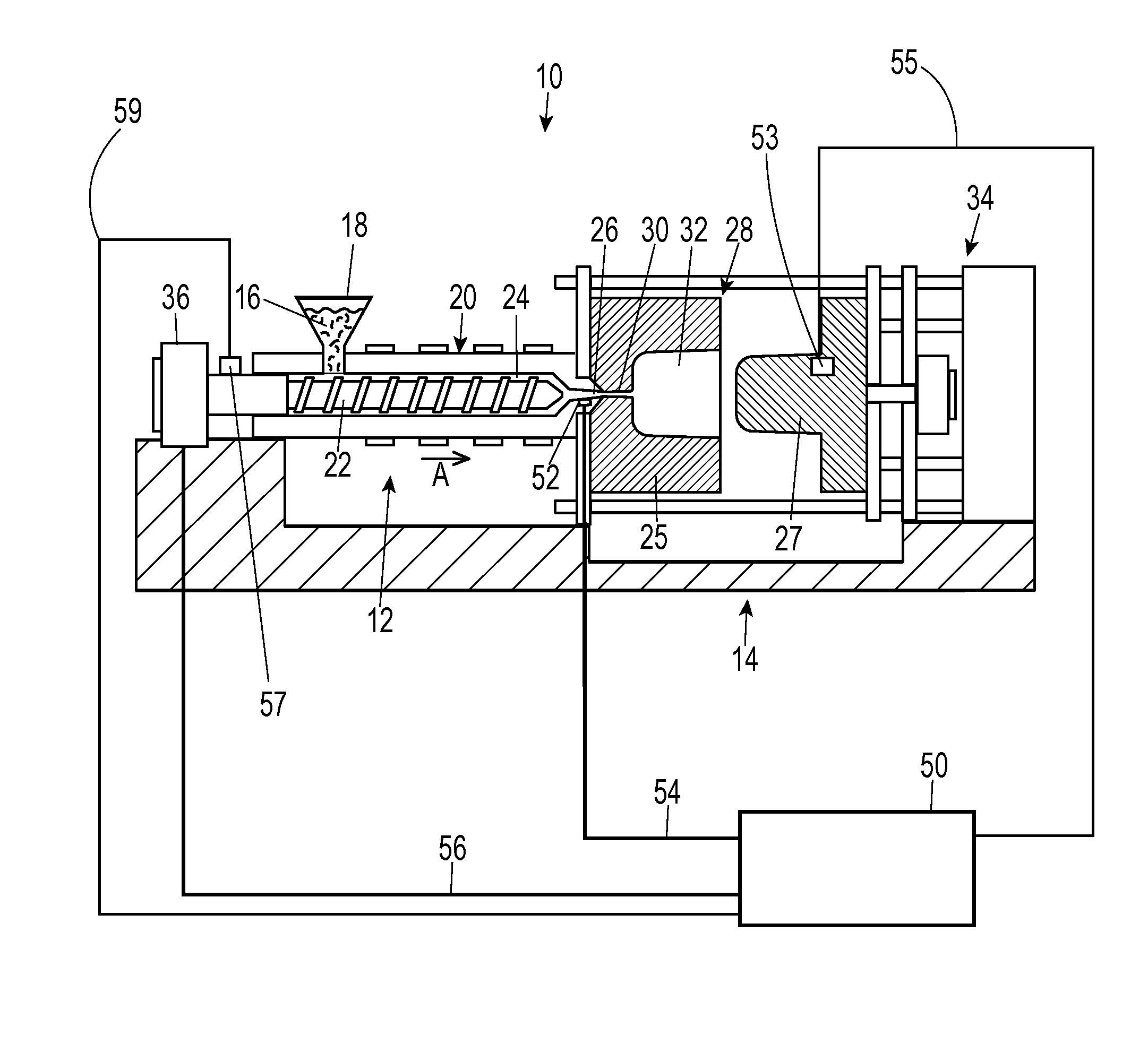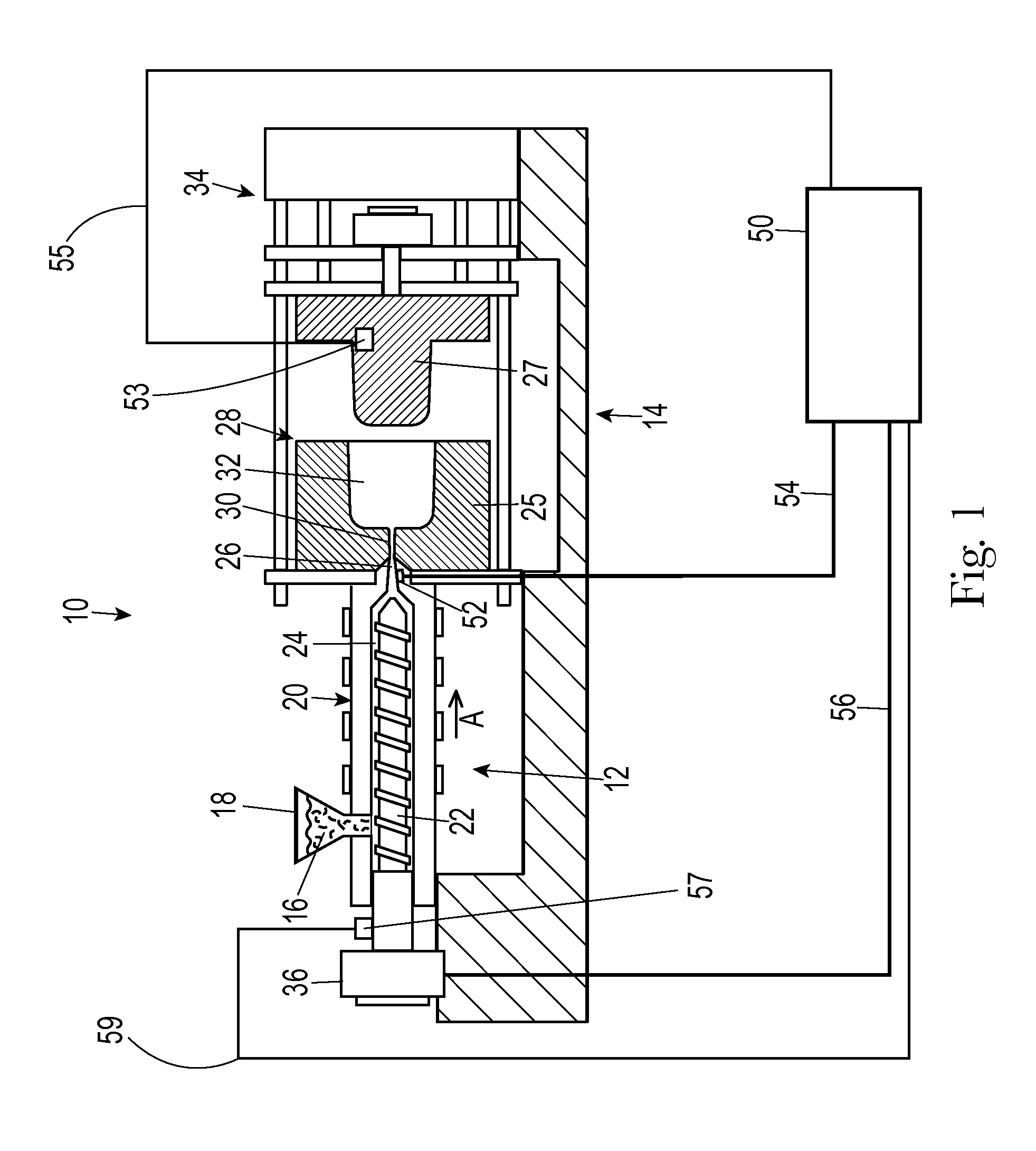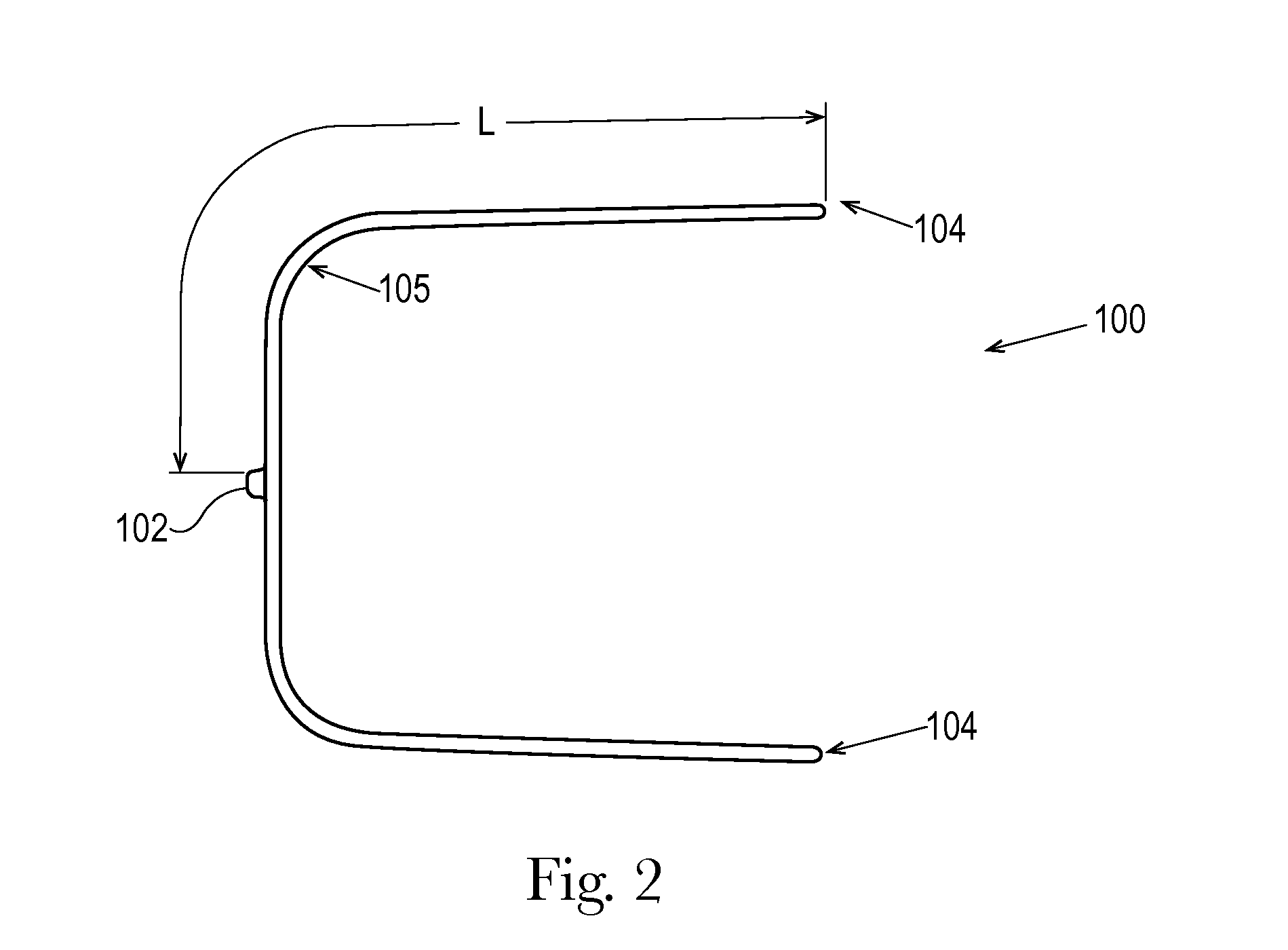Injection Molding Machines and Methods for Accounting for Changes in Material Properties During Injection Molding Runs
a technology of injection molding machine and material properties, which is applied in the direction of auxillary shaping apparatus, manufacturing tools, ceramic shaping apparatus, etc., can solve the problems of non-trivial task, high cost, and limited practical limit of how thin walls of a part may be molded using conventional high variable pressure injection molding process
- Summary
- Abstract
- Description
- Claims
- Application Information
AI Technical Summary
Benefits of technology
Problems solved by technology
Method used
Image
Examples
Embodiment Construction
[0027]Embodiments of the present invention generally relate to systems, machines, products, and methods of producing products by injection molding and more specifically to systems, products, and methods of producing products by low substantially constant pressure injection molding. However, the devices and methods for accounting for viscosity changes in the molten plastic material described herein are not limited to low substantially constant pressure injection molding machines and processes. Rather, the disclosed devices and methods for accounting for viscosity changes in the molten plastic material may be incorporated into virtually any injection molding machine or process, including, but not limited to, high pressure processes, low pressure processes, variable pressure processes, and constant or substantially constant pressure processes.
[0028]The term “low pressure” as used herein with respect to melt pressure of a thermoplastic material, means melt pressures in a vicinity of a n...
PUM
| Property | Measurement | Unit |
|---|---|---|
| Fraction | aaaaa | aaaaa |
| Time | aaaaa | aaaaa |
| Time | aaaaa | aaaaa |
Abstract
Description
Claims
Application Information
 Login to View More
Login to View More - R&D
- Intellectual Property
- Life Sciences
- Materials
- Tech Scout
- Unparalleled Data Quality
- Higher Quality Content
- 60% Fewer Hallucinations
Browse by: Latest US Patents, China's latest patents, Technical Efficacy Thesaurus, Application Domain, Technology Topic, Popular Technical Reports.
© 2025 PatSnap. All rights reserved.Legal|Privacy policy|Modern Slavery Act Transparency Statement|Sitemap|About US| Contact US: help@patsnap.com



